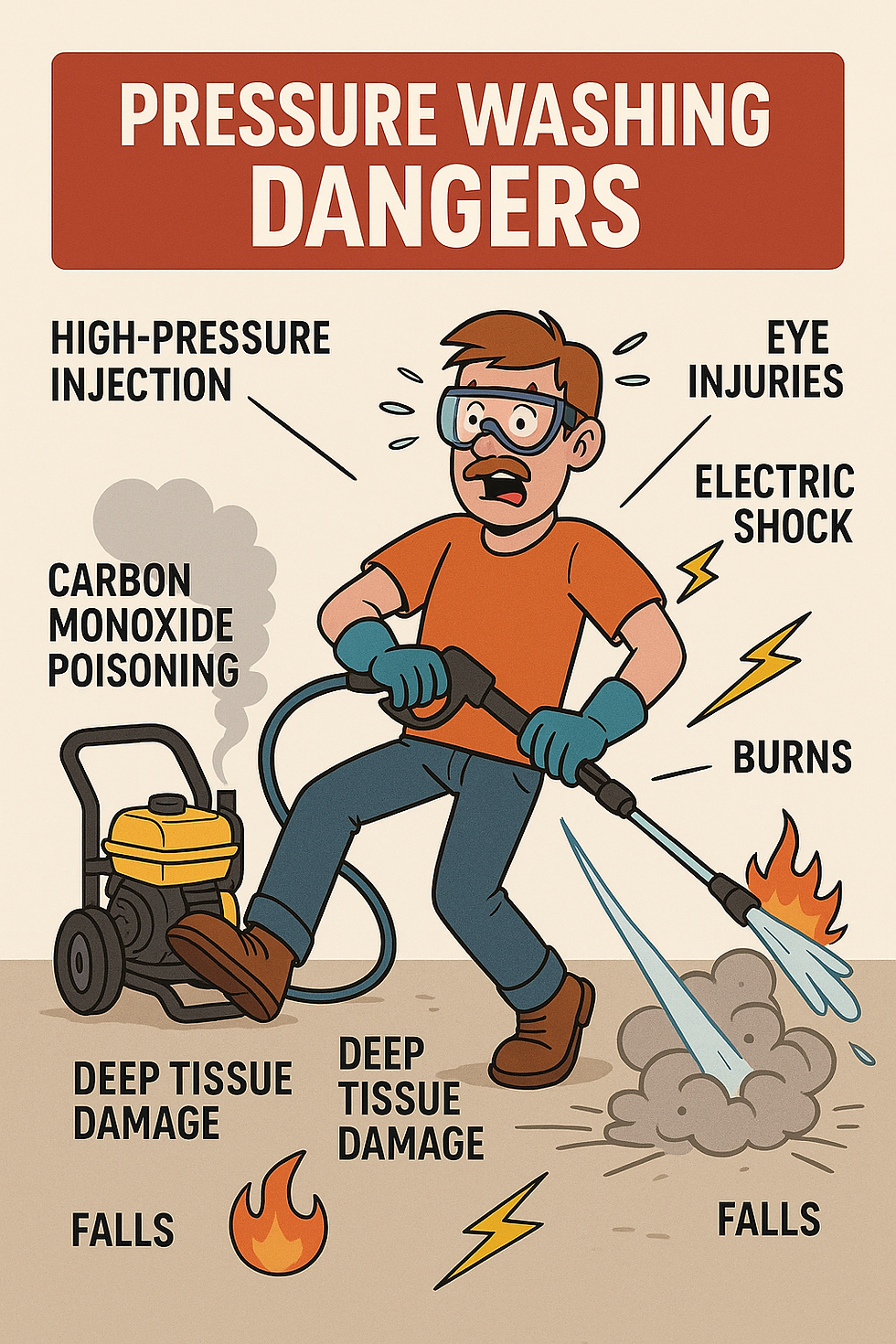Always Test Before You Spray: One Contractor’s Mistake — And the Lesson That Could Save You Thousands
- Trudi Weickum

- Jul 19
- 3 min read

I got a call this week from a contractor in full panic mode.
He had been soft washing a home — used his usual 1% mix — and thought everything was going fine…Until it wasn’t.
The paint on the home started reacting. Streaks. Blotches. Bleed-through.Now? His only option is to repaint the entire thing.
The culprit?A coating that included Magenta R3 — a specific pigment that can break down or react when exposed to even mild bleach solutions.
The Real Problem: He Didn’t Test First
He wasn’t careless. He wasn’t sloppy. He just didn’t test.
And that small skip in the process cost him big.
Why Testing Is Non-Negotiable — Especially on Painted Surfaces
Every surface is different. Every paint formulation is different.What works on one house might ruin the next one.
Some paints — especially those with sensitive pigments like Magenta R3 — can:
❌ Bleach out or fade
❌ Streak under pressure
❌ React chemically with sodium hypochlorite
❌ Stain gutters, soffits, siding, and trim
❌ Void manufacturer warranties
What Is Magenta R3?
Magenta R3 is a synthetic pigment used in certain paints and coatings for its vibrant color and UV resistance.But here’s the issue:
🔬 It’s chemically unstable when exposed to sodium hypochlorite (bleach) — even at low concentrations like 1%.🎨 It’s most commonly found in reds, purples, burgundies, and some tans or grays.
If your mix hits it, it can pull pigment right out of the coating — even if it looks fine while wet.
By the time it dries? Damage is done.
How to Test Before You Spray
It only takes a few minutes — but it can save you thousands in repainting costs, insurance headaches, or lost customer trust.
Here’s what I recommend:
🧪 Spot Test Protocol:
Pick a hidden area (behind a downspout, under an eave, etc.)
Spray a light mist of your house wash mix (even just 0.5% to start)
Let it dwell for 5–10 minutes
Rinse gently and wait for full dry-down
Inspect closely for color shift, sheen change, or surface reaction
If anything looks off, stop. Consult with the homeowner and consider alternative cleaning methods — or decline the job entirely if it’s too risky.
Bonus Tip: Ask About Previous Painting
If you're working on a house that’s been recently painted — especially DIY or non-commercial jobs — ask what paint was used.
✔️ Sherwin-Williams?
✔️ Behr?
✔️ Custom mixes from hardware stores?
Sometimes the homeowners don’t know — but even asking the question helps you document your process and protect your business.
Final Thought: Testing = Professionalism
Here’s what testing says to a customer:
You care about their property
You know your chemistry
You’re not just spraying — you’re treating their home with precision
And that level of care sets you apart.
We Dive Deep Into Chemistry and Testing at the Panhandle Expo
If you want to get better at surfactant science, chemical safety, and real-world problem-solving — you need to be at the Panhandle Pressure Washing Expo.
We cover:
✅ Surface testing techniques
✅ Chemical compatibility
✅ Pigment reactivity (like Magenta R3)
✅ Real-life contractor case studies
✅ How to avoid costly mistakes before they happen
🎟️ Register today for the Panhandle Pressure Washing Expo
Because one test could save one job — and one job could save your reputation.
By Trudi Weickum | Industry Educator | Panhandle Pressure Washing Expo








Comments